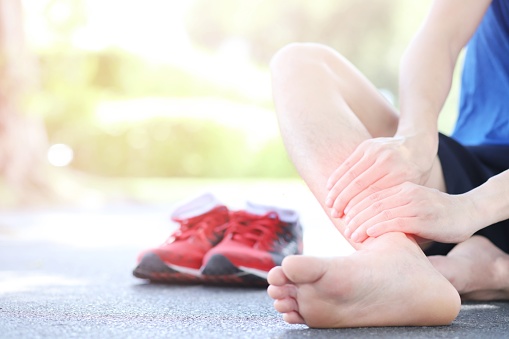
If you have ever experienced pain in your shin, you may have been suffering from shin splints. Shin splints are a common injury among runners and athletes, but can occur in anyone who participates in strenuous activities. In this blog post, we will discuss the most common causes of shin splints and how to avoid them!
Shin splints are most often caused by overuse. This means that you are participating in activities that place too much stress on your shins, such as running or jumping. The latter may also cause heel pain that you will need to treat with plantar fasciitis Adelaide specialists.
If you have shin splints, you may notice pain when you touch your shins or when you put weight on your legs. Shin splints can also be caused by poor form when participating in activities. This means that you may be putting too much stress on your shins if you are not using proper technique. Improper shoes can also lead to shin splints. If your shoes do not provide enough support or cushioning, this can put additional strain on your shins and cause pain. Finally, tight muscles in the calves can also contribute to shin splints. If your calf muscles are tight, they may put additional strain on your shins and lead to pain.
If you are suffering from shin splints, there are several things that you can do to treat the pain:
- Rest
Rest is always the best medicine for shin splints. This means taking a break from activities that may be causing the pain.
- Ice
Ice can also help to reduce inflammation and pain. Apply ice to the affected area for 20 minutes at a time, several times a day.
- Compression Sleeve
You may also want to try wearing a compression sleeve or wrapping to help support your shins and reduce pain.
- Over-the-Counter Medications
Finally, over-the-counter medications such as ibuprofen can also help to reduce inflammation and pain. If you have severe shin splints, you may need to see a Shin splints or orthopedic specialist for additional treatment.
There are also several things that you can do to prevent shin splints from occurring in the first place.
- First, make sure that you warm up before participating in any activities. A good warm-up will help to loosen your muscles and prepare your body for activity.
- Second, be sure to use proper form when participating in activities. This means using the correct technique and avoiding any excessive stress on your shins.
- Third, wear shoes that provide adequate support and cushioning. This will help to reduce the amount of stress on your shins and prevent pain.
- Finally, stretch your calf muscles regularly. This will help to keep them loose and reduce the amount of strain on your shins.
By following these tips, you can help to prevent shin splints from occurring. If you do experience pain in your shins, be sure to rest and ice the area. You may also want to see a Shin splints Parkside doctor or orthopedic specialist for additional treatment. With proper care, you can treat and prevent shin splints!







